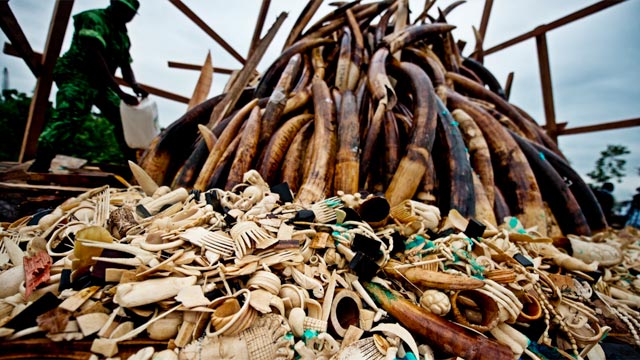
The rolling up of a major ivory smuggling network in Tanzania by police last year, and the ongoing trial of alleged ringleader Yang Fenglan, also known as the “Ivory Queen” and her accomplices, demonstrates once again the continued profitability of the illegal wildlife trade that is destroying East African biodiversity, as well that of other ecosystems in southern and central Africa.
The illegal networks compete with conservation efforts that, while trying to breed sustainable populations for endangered animals, also allow for legal hunting of these same animals to help finance those projects. The poaching, being totally unregulated and driven by far-removed foreign demand, threatens such efforts. And the poachers themselves are well-equipped to defend their kills by force: at least 27 park rangers died guarding African wildlife preserves.
It is significant that Yang, a Chinese national who described herself as a networker for local and foreign businesses, made use of the wider Chinese economic community to bring the ivory out of the country. A similar network—but even larger than this one—was exposed in Kenya in 2013, smuggling ivory out of the country by land, sea, and air. According to Kenya’s The Standard, “the dealers conceal their identities through layers of non-existent companies using fake identity cards” and “there is always a collision between airline staff, Kenya Revenue Authority (KRA) officials, KWS [Kenya Wildlife Service] staff stationed at the airport, and police,” with low- to mid-range employees of airports and marine terminals taking bribes to let the ivory out of the country.
Far from being a world of doctored shipping manifests and container units full of tusks, though, the goods come out in dribs and drabs hidden among cheap foodstuffs and consumer goods. Yet these drops in the bucket add up—in 2011, for instance, a whopping 40 tons of ivory was interdicted as part of the enforcement of the Convention on International Trade in Endangered Species of Wild Fauna and Flora (CITES) treaty.
Though China maintains an anti-poaching force in Zimbabwe, is party to international accords, and has advanced legislation domestically to cut back on wildlife farming, the prevailing stereotype is one of ravenous Chinese consumers and lackluster enforcement by China hardly helps this image. Yet the United States and European Union are not all that far behind the PRC.
The Chinese market is mainly for luxury goods such as decorative furnishings, gourmet delicacies, or traditional medicine. These are major draws in Western nations as well, but also common is the acquisition of live endangered species for private collections. That such corruption for the movement of illegal wildlife products could be so institutionalized within the border control system has national security implications as well—the ease with which staff can be plied with money to look the other way on contraband is of immense value to criminal organizations, intelligence services, and armed non-state actors.
Poaching is a source of revenue for some of the latter, such as al-Shabaab in Somalia. Using the country’s charcoal exports (which themselves are of questionable legality) to the Gulf States as cover, elephant ivory and rhino horn poached in Central and East Africa makes its way through Somali brokers to points further east. The amount of money the group earns from its role as a middleman is not entirely clear—perhaps several hundred thousand dollars a month—but the profits probably go to the upkeep of its military forces.
This trade exacts a brutal toll across the continent: in Mozambique, for instance, the rhinoceros is as of 2013 extinct and elephant populations have been halved since 2010. Even South Africa, where conservation efforts are relatively well-funded, poaching of rhino horn has exploded since 2008 and park rangers are playing catch-up to stem the tide.
Somalia’s role in this supply chain stems from its “lawlessness”—though it would be more accurate to say its multiple legal systems, in the absence of a national government, that are critically lax when there is a profit to be made. This makes it an attractive clearinghouse for certain dealers, but also a very unpredictable one given the security situation.
Hence much of the multimillion dollar trade going out through more stable routes in countries where there are functioning national institutions and expatriate communities to co-opt—as even al-Shabaab makes use of the Somalia diaspora in Kenya to ensure a smooth flow of operations. The lack of common enforcement protocols also enables the trade, as some nations are much less punitive towards traffickers—though hard jail time or threat of death at the hands of wildlife sanctuary guards or militaries seems to have little effect on the smugglers’ morale.
Border controls in some of the less-settled areas are effectively nonexistent—and it would be hard to enforce them, not least because the people who do live there have livelihoods depending on free movement. Acquisition of live animals or hides, eggs, horn, and tusk, is not simply the province of well-armed mercenaries. Poaching is also a former of substance in some of the least-governed and most-ignored reaches of the Congo River Basin or on the borders of the Central African Republic, and, more recently, organized raids coming out of war-torn South Sudan.